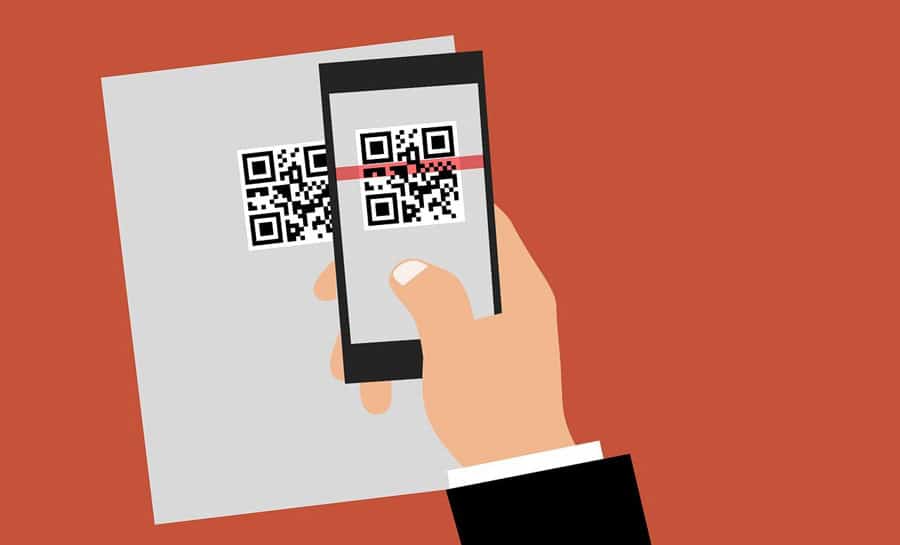QR codes are everywhere—restaurant menus, flyers, event listings, and social media. Convenient and easy to use, you simply scan a QR code with your smartphone camera which then directs you to a website link, coupon, video, or some other online content.
But like most modern conveniences, QR codes come with an unfortunate dark side. Cybercriminals can exploit this accessible technology by creating malicious QR codes designed to steal your personal information, infect your device with malware, or trick you into paying money.
No need to fear, though. Read on to discover the ins and outs of QR codes so that you know how to spot the potential dangers lurking behind those seemingly innocent squares.
The QR Code Renaissance
QR codes were originally designed for tracking parts in the automotive industry, but they’ve experienced a renaissance in recent years as a form of marketing with low cost to promoters and ease of reach. They offer instant, convenient access to information: you simply scan a code. They’ve become an integral part of industries like retail, real estate, and hospitality.
Unfortunately, cybercriminals are quick to adapt. A new phishing scam has emerged, exploiting the trust we place in QR codes.
How QR Code Scams Work
The scammer prints out a fake QR code and places it over a legitimate one. For example, they might stick their code on a poster that advertises an event signup or product discount.
You come along and scan the fake QR code, thinking it’s legitimate. The fake code may direct you to a phishing website that asks you to enter sensitive data like credit card details, login credentials, or other personal information.
Other times, scanning the QR code may prompt you to download a malicious app that contains malware that can spy on your activity, access your copy/paste history or contacts, or even lock your device until you pay a ransom. The code could also direct you to a payment page that charges you a fee for something supposedly free.
Here are some common tactics to watch out for.
- Legitimate Codes Concealed: As described above, cybercriminals tamper with legitimate QR codes, often adding a fake QR code sticker over a real one. They embed malicious content or redirect users to fraudulent websites.
- Fake Promotions and Contests: Scammers can use QR codes to lure users into fake promotions or contests. When users scan the code, it may direct them to a counterfeit website that prompts them to provide personal information. This can lead to potential identity theft or financial fraud.
- Malware Distribution: Some malicious QR codes initiate malware downloads onto the user’s device. This can result in compromised security, including unauthorized access to personal data and potential damage to the device’s functionality.
Tips for Safe QR Code Scanning
Thankfully, the dangers around potential QR code scams are easily identifiable if you know what warning signs to look for. Here are some tips for clearing any QR codes you find in the wild.
- Verify the Source: Use caution when scanning QR codes from unknown or untrusted sources. Verify the legitimacy of the code and its source—especially if the site you’re directed to prompts you to enter personal information.
- Use a QR Code Scanner App: Consider using a dedicated QR code scanner app rather than the default camera app on your device. Some third-party apps provide extra security features such as code analysis and website reputation checks.
- Inspect the URL Before Clicking: Before visiting a website prompted by a QR code, review the URL. Ensure it matches the legitimate website of the organization it claims to represent.
- Avoid Scanning Suspicious Codes: Trust your instincts. If a QR code looks suspicious, refrain from scanning it. Scammers often rely on users’ curiosity. Be careful when scanning QR codes that you see in public places, and don’t scan them if they look suspicious, damaged, or tampered with. Exercising caution is paramount.
- Update Your Device and Apps: Keep your device’s operating system and QR code scanning apps up to date. Regular updates often include security patches that protect against known vulnerabilities.
- Be Wary of Websites Accessed Via QR Code: Don’t enter any personal information on a website that you accessed through a QR code. Also avoid paying money or making donations through a QR code. Only use trusted and secure payment methods.
Contact Us About Phishing Resistant Security Solutions
QR codes can be useful and fun in most cases, but they can also be dangerous if you’re not careful. Only scan them with caution. Protect yourself from scammers who want to take advantage of your curiosity.
QR code scams fall under the umbrella of phishing, one of the most dangerous modern risks for individuals and organizations. If you need help ensuring your devices, networks, and employees are phishing resistant, contact Anderson Technologies today to learn how we can help!
Article used with permission from The Technology Press.




